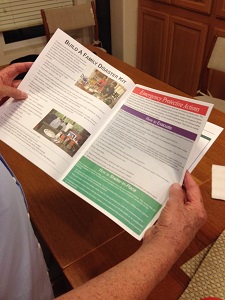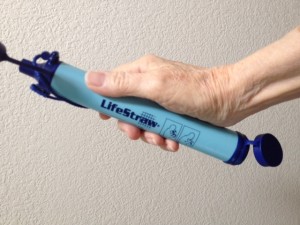Dear Parent
Dear Parent,
Welcome to another exciting school year. Before we allow your child to come to school, we need to know that s/he knows what to do in an emergency.
We don’t have time to fit this information into the regular school curriculum. So if your child is to have a good chance of survival, it’s up to you.
Please sign and return this note so we know your child is properly prepared.
Sincerely, Your School Administrator
Wow! What if you got this letter from YOUR child’s school? How would you react?
I bet you’d have . . .
Questions for that “School Administrator!”
Here are a few of them:
1. What should my child know about responding to an emergency at school?
2. What emergencies are we talking about?
3. What plans does the school have for protecting my child?
4. Has my child’s teacher received disaster training?
5. What do you expect of me if an emergency happens during the school day?
The sad truth is, many parents do NOT know the answers to these questions. And I wonder, how many school administrators could answer for their school and their teachers?! it’s worth some effort to find out more.
I was inspired to write this post by three things.
 • My friend Russell sent me a copy of a booklet passed out at his kids’ school. You’ll see it in the picture. It is packed with valuable information, pulled from a variety of sources. Because it IS so packed, though, no child would ever start reading it. Even a parent would be hard pressed to get through it. The booklet could answer questions 1 and 2 above.
• My friend Russell sent me a copy of a booklet passed out at his kids’ school. You’ll see it in the picture. It is packed with valuable information, pulled from a variety of sources. Because it IS so packed, though, no child would ever start reading it. Even a parent would be hard pressed to get through it. The booklet could answer questions 1 and 2 above.
• For the past six weeks, the LinkedIn Group that I participate in has been discussing disaster preparedness in the schools. These are professional trainers and consultants. Their reluctant conclusion? With rare exceptions, schools ignore basic survival skills for students. Some schools would be able to answer questions 3 & 4 above.
• Are schools required to be able to answer our questions? In June 2013 the White House released a guide for developing emergency operations plans for elementary schools. The guide “incorporates lessons learned from recent incidents, and responds to the needs and concerns voiced by stakeholders following the recent shootings in Newtown and Oak Creek and the recent tornadoes in Oklahoma.”
Here in California, other resources are available through the State Department of Education. As far as requirements, all I could find is that regular fire and earthquake drills are mandatory. Still, a school that takes advantage of the guides and resources mentioned would, in fact, be able to answer all the questions above.
So where does YOUR kid’s school fit? Which of the questions can your school answer? Which CAN’T it answer?
It’s September. Back to School Month PLUS National Preparedness Month. Could there be any better time to find out more?
Virginia Nicols
Your Emergency Plan Guide Team
Get all our Advisories. Sign up below.


